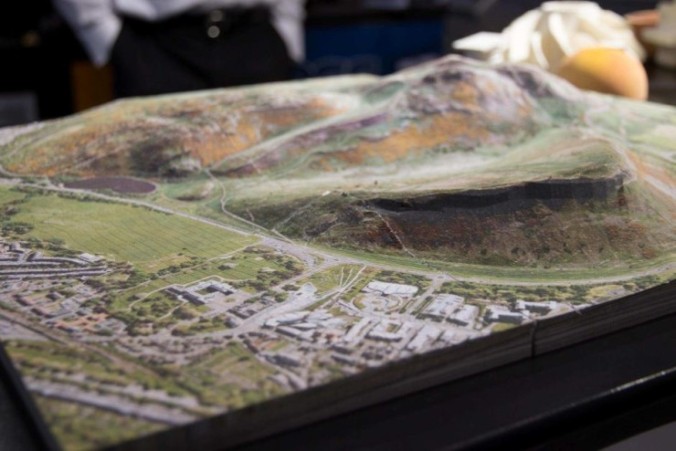Thought I would write a quick update to an older post on map boards. In the 2014 post I described a number of technologies that might one day replace the paper map in headquarters locations.
I said;
Maps need to be detailed, have persistence, viewable in all conditions, large-scale and very high resolution. Paper, in these circumstances, is pretty hard to beat.
How about an alternative?
Whilst being able to view 3D maps on a 2D screen is useful I think having the ability to look at a topographic relief map in physical form would have many terrain appreciation and training benefits.
Solid Terrain Modelling create large models using a combination of inkjet printing and the precision machining of solid foam boards.
Real-time data can be overlayed onto these 3D model using multiple projectors.
With advances in 3D printing, it is easy to envisage LIDAR data and optical imagery combined to form 3D tiles that can be slotted together
Indeed, one can already purchase smaller 3D printed maps using publically available, or your own, mapping data.
Everything from small battlefield history maps to 3D maps printed using multiple layers of printed paper are now available.

Read more at 3Dprint.com
Actually, the Chinese Army is doing this
Obviously, they are not very portable, unless you like jigsaw puzzles!
or have a lot of time.
Whilst paper maps are in no means under threat of extinction, in some cases, their days may be numbered.
Interactive topographic map from a sand box!
LikeLike
H’mmm. I’m totally unconvinced by large physical 3D terrain models. I can’t work out what level of command they would be even vaguely useful, at the lower levels boots on the ground recce is usually the best solution (and space is a constraint at these levels), at higher levels contours and oblique air imagery provide all you need, and digital terrain enhances this. I’m also amused by horizontal maps with people all round them. The best map setup I ever came across was in Corps HQ in Germany, vertical mapboard about 3×1.5 metres, G2 ran the left half, G3 ran the right. Simples!
LikeLike
Some individuals do struggle to visualize 2D imagery into 3D in their minds. As a draughtsman trained originally on the board and then onto 2D CAD much later found at times describing the function of a machine to non- engineer types at times frustrating. The development of 3D CAD ,especially enhanced by rendering surfaces and the as functioning on screen model I.e. ‘moving’ has made life much more simple . When tied into the first stage of the process , the sales pitch , such models can be a deal maker when a competitor cannot deliver a similar demonstration.
LikeLike
Anyone can have it now, but on a hand-held small screen Garmin device only works for very close zoom-ins for terrain features:
https://support.garmin.com/support/searchSupport/case.faces?caseId=%7B2a5c7c30-abc7-11df-55a0-000000000000%7D
LikeLike
One of the things I hate to see popping up every now and then, including that dreadnaught 2050 shit bag, is holographic displays. I see absolutely no practical use for them, other than looking cool.
However that augmented reality 3D map not only looks awesome, but also looks like something that could actually have some functionality as their is some kind of tactility to the concept that us humans enjoy!
LikeLike
Ever heard of the maxim- If anything can go wrong it will.
Best of all, it gives more visualization for those explaining the situation, and its well known to remember complex things , using memory pictures helps. This would enhance this as the memory picture matches the real situation rather than a piece of paper with wriggly lines.
LikeLike
Nice 3d map of Hollyrood park there.
Sometimes though simplicity is best
LikeLike